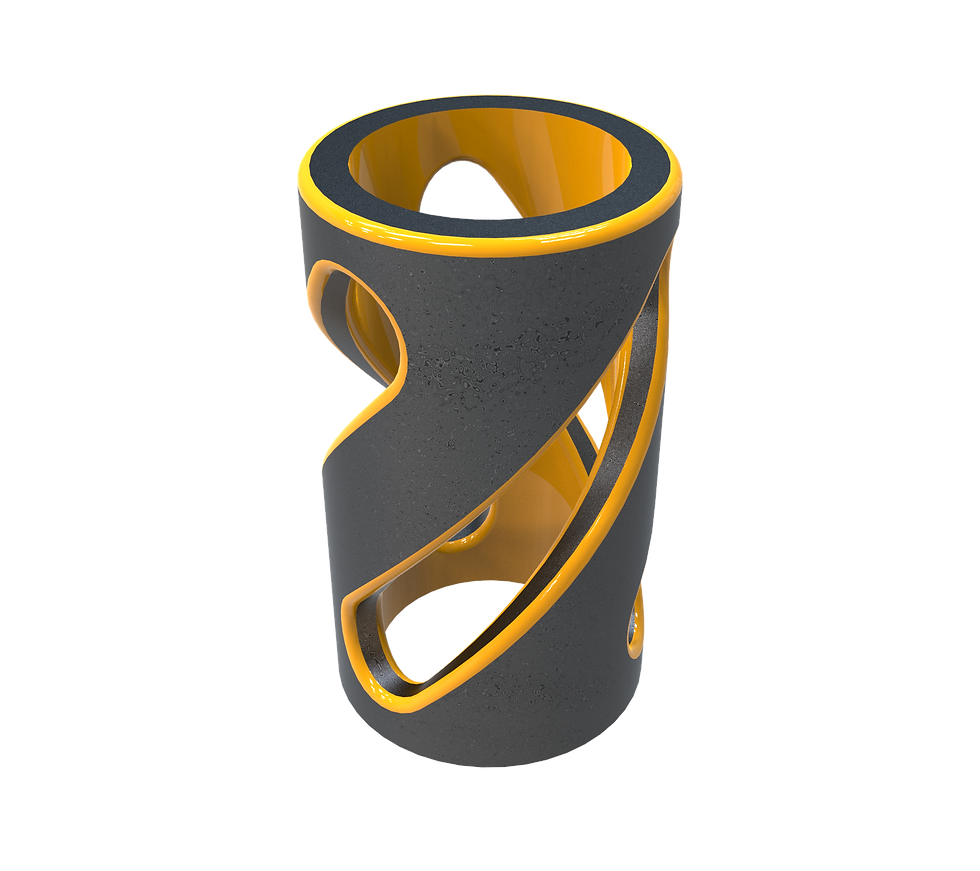3D Exercise 22
- Breno Cruz

- 2 de out.
- 2 min de leitura

In this CAD tutorial we'll use the features:
Here are explanations for the Revolve, Hole, Plane Tangent to Face at Point, and Circular Pattern commands in Fusion 360.
Revolve
This command creates a 3D object by rotating a 2D profile around a central axis. It's the most efficient way to model parts that have circular or cylindrical symmetry, such as shafts or vases.
Hole
This is a specialized tool for creating different types of cylindrical cuts in a part. Unlike a simple extruded cut, the Hole command offers options for various industry-standard hole types, including tapped (threaded), clearance, or countersunk holes. It saves time by automatically handling the geometry and thread specifications.
Plane Tangent to Face at Point
This is a construction tool used to create a new work plane. You use it to define a plane that is tangent (just touching) to a curved surface (like a cylinder or sphere) and also passes through a specific point on that surface. This is essential for creating new sketches or features at precise locations on curved geometry.
Circular Pattern
This is a powerful automation tool that duplicates a feature (like a hole or an extruded boss) or an entire body in a circular arrangement. You select the object to copy, specify the axis of rotation, and set the number of instances, ensuring all copies are perfectly spaced and aligned.
All dimensions are in mm/g/s/ISO
3D Sketch

Exercise 22 - 3D practice drawing for all CAD software ( AutoCAD, SolidWorks, 3DS Max, Autodesk Inventor, Fusion 360, CATIA, Creo Parametric, SolidEdge etc.)
Tip: Subscribe to the channel for more tutorials like this.
Tutorial In Autodesk Fusion: https://youtu.be/Ig5Q5NgHyvI



Comentários